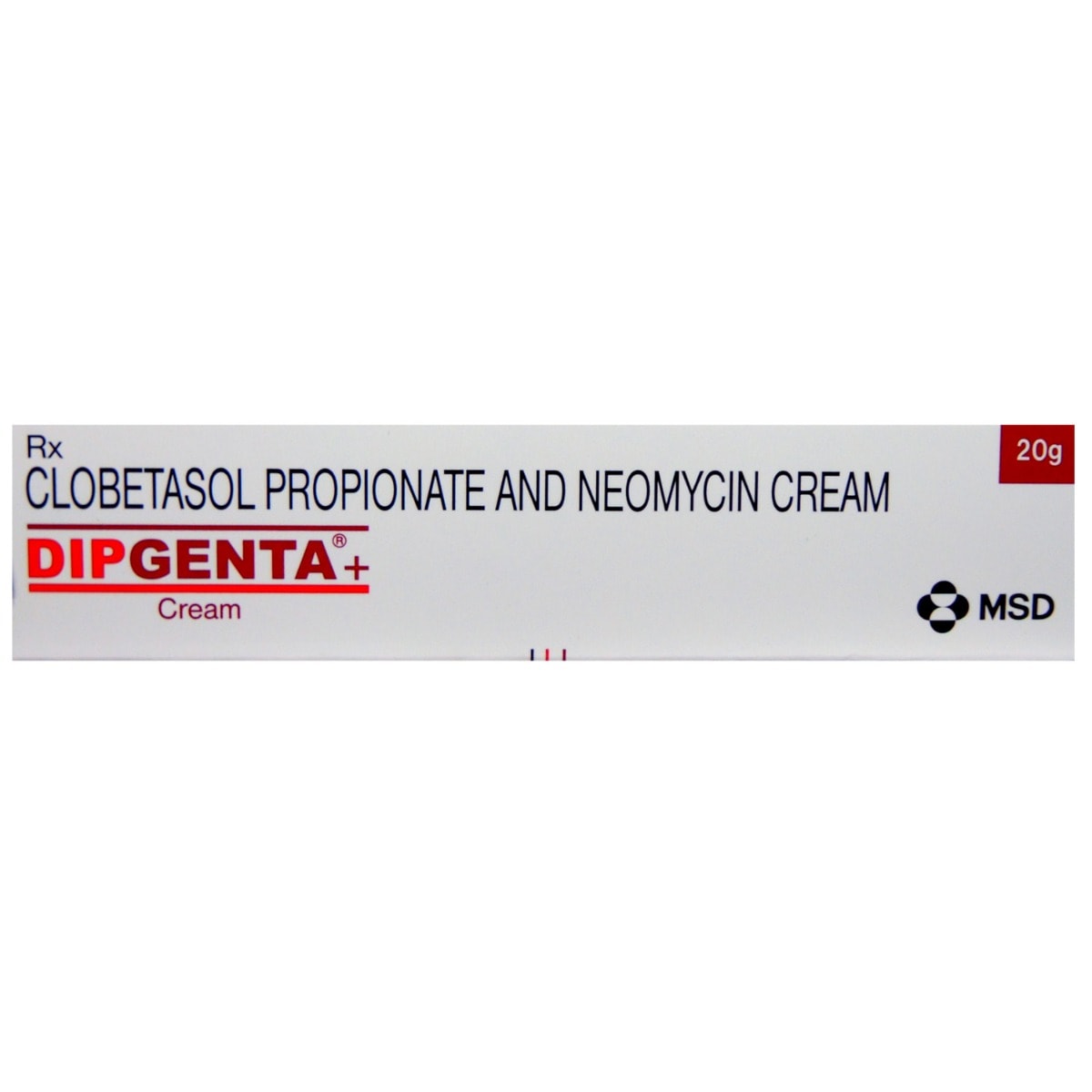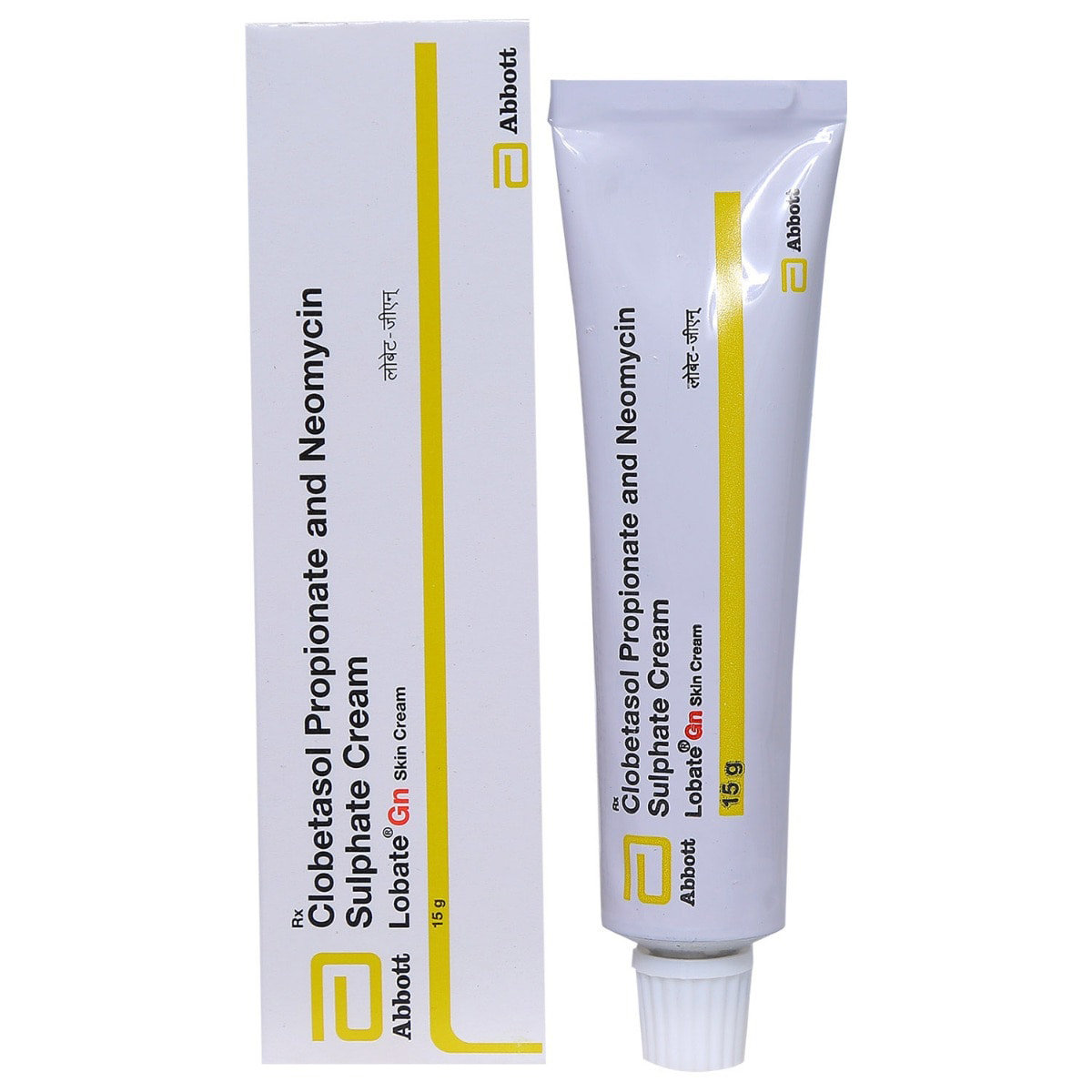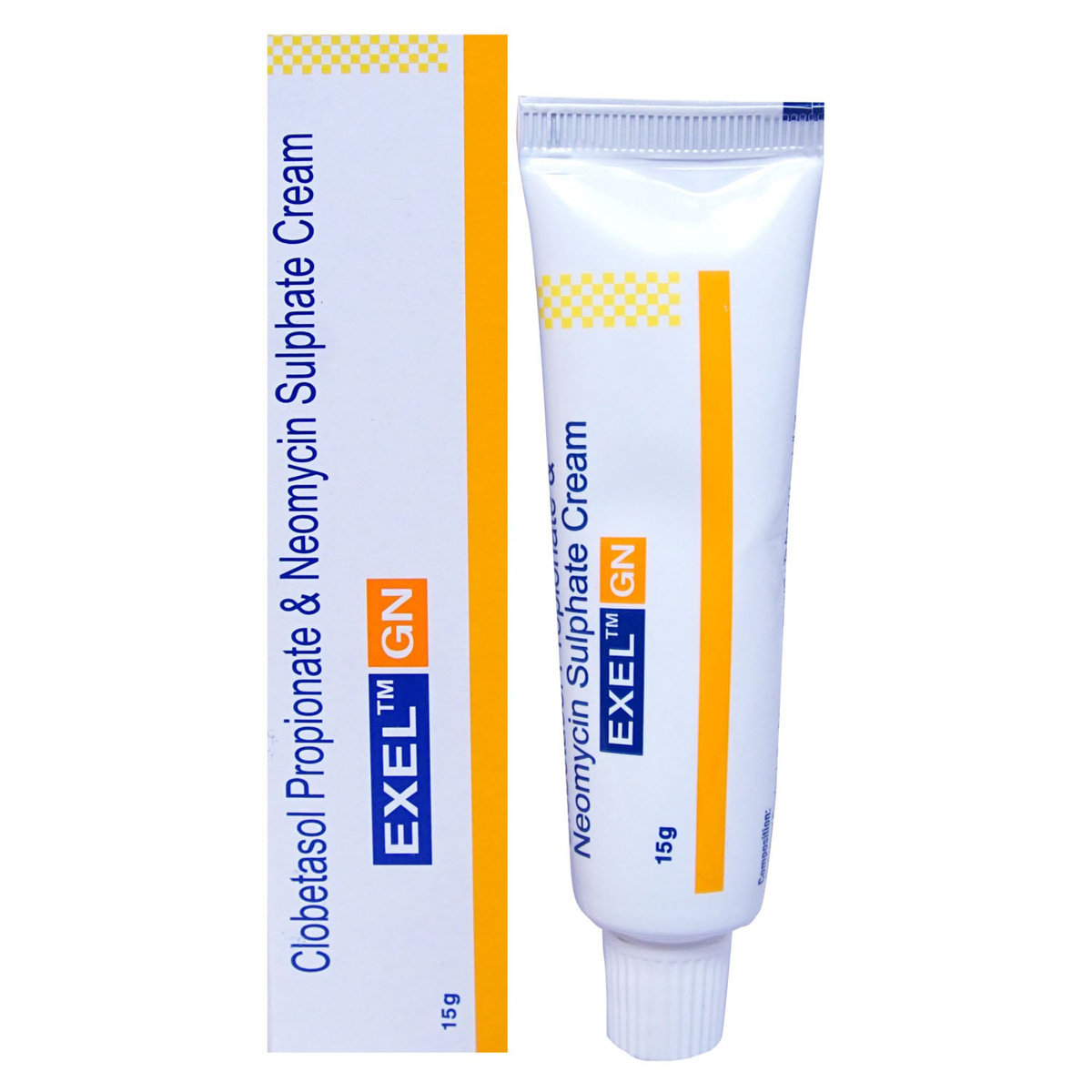Viclob-N Cream 20 gm


MRP ₹100
(Inclusive of all Taxes)
₹15.0 Cashback (15%)
Provide Delivery Location
Online payment accepted
 Prescription drug
Prescription drugWhats That
Composition :
Manufacturer/Marketer :
Consume Type :
Expires on or after :
Return Policy :
About Viclob-N Cream
Viclob-N Cream belongs to the class of dermatological medication, primarily used to treat bacterial skin infections. Bacterial infection occurs when harmful bacteria grow in the body and causes infection. It can infect any part of the body and multiply very quickly.
Viclob-N Cream consists of two medicines, namely: Clobetasol and Neomycin. Clobetasol is a steroid medicine. It blocks prostaglandins' production (chemical messengers) that make the skin red, swollen and itchy. On the other hand, Neomycin is an antibiotic used in treating bacterial and fungal infections of the skin. It prevents the synthesis of essential proteins required by bacteria to carry out vital functions.
Use this medication on the skin only as advised by the doctor. Viclob-N Cream is generally safe to use. Some may experience side effects like burning, irritation, itching, redness, and thinning of skin at the application site. Most of these side effects of Viclob-N Cream do not require medical attention and gradually resolve over time. If these side effects persist longer, please consult your doctor.
Brief your medical history to doctor, if you are allergic to Viclob-N Cream or any of its components. Let your doctor know if have any fungal infections (candida infections, ringworm or athlete's foot) or any viral infections (herpes or chickenpox), acne, rosacea (redness of the skin with small, red, pus-filled bumps on the face), and psoriasis. Pregnant and breastfeeding women should use Viclob-N Cream with proper consultation and caution. Sometimes, antibiotic medications can cause antibiotic resistance. In such cases, your doctor may prescribe other antibiotics, you are not resistant to.
Uses of Viclob-N Cream
Directions for Use
Key Benefits
Viclob-N Cream treats bacterial skin infections by killing and preventing the growth of bacteria. Viclob-N Cream is a combination of two medicines: namely: Clobetasol and Neomycin. Clobetasol is a steroid medicine. It blocks the production of prostaglandins (chemical messengers), which make the skin red, swollen and itchy. On the other hand, Neomycin is an antibiotic used in treating bacterial and fungal infections of the skin. It prevents the synthesis of essential proteins required by bacteria to carry out vital functions.
Storage
- Avoid extreme heat or cold, like hot showers or cold winds, to prevent worsening skin discomfort.
- Cool compresses: To reduce itch, redness, and swelling.
- Avoid irritants like harsh chemicals or allergens to prevent worsening skin discomfort.
- If you have severe itching, burning, or blistering seek medical attention.
- Keep your skin clean by gently washing your face two times daily and after sweating. Choose a mild and non-abrasive cleanser.
- Use gentle alcohol-free skin care products. Avoid products that might irritate your skin such as exfoliants, astringents and toners.
- Acne may also occur due to oil in the hair. Thus, if you have oily hair, shampoo more frequently than you do now and keep your hair away from face.
- Keep your hands off your face as touching face throughout the day might worsen acne. Also, do not pick, squeeze or pop acne as it will prolong the healing process and increase the risk of dark spots and scarring.
- Avoid tanning by applying a broad spectrum sunscreen and wearing sun-protective clothing when outdoors.
- Mild hair follicle inflammation often heals on its own without needing treatment.
- You can apply a warm saltwater or vinegar solution to the affected area with a washcloth, or use over-the-counter antibiotics, oatmeal lotion, or hydrocortisone cream for relief.
- Avoid making the affected area worse by not shaving, scratching, or wearing tight clothes.
- Apply a warm compress to the area 3-4 times a day for 15-20 minutes to help speed up healing.
- Do not scratch, squeeze, or pop any bumps, as this may lead to infection or other problems.
- If self-care methods fail, consult a doctor for further treatment and advice.
- Shield your skin from the sun by using sunscreen, seeking shade, and wearing protective clothing.
- Please don't smoke, as it damages the skin and reduces blood flow.
- Treat your skin gently by limiting bath time, using mild cleansers, and shaving carefully.
- Eat a healthy diet of fruits, vegetables, whole grains, and lean proteins.
- Stay hydrated by drinking plenty of water.
- Manage stress through sleep, exercise, meditation, and enjoyable activities.
- Additionally, use moisturizers to coat your skin with a protective barrier, and consider wearing sun-protective clothing.
- Apply moisturizer immediately after showering or bathing.
- Use a moisturizer containing lanolin, petroleum jelly, glycerine, hyaluronic acid or jojoba oil.
- Do not use hot water for bathing. Instead use warm water and limit showers and bath to 5 to 10 minutes.
- Apply a sunscreen with SPF-30 or higher.
- Avoid harsh soaps, detergents and perfumes.
- Do not scratch or rub the skin.
- Drink adequate water to prevent dehydration.
- Wear pants, full sleeves and a wide-brimmed hat while going out in the sun.
- Hydrate your body: Drink enough water to prevent dehydration and headaches.
- Calm Your Mind: Deep breathing and meditation can help you relax and relieve stress.
- Rest and Recharge: Sleep for 7-8 hours to reduce headache triggers.
- Take rest: lie down in a quiet, dark environment.
- Cold or warm compresses can help reduce tension.
- Stay Upright: Maintain good posture to keep symptoms from getting worse.
- To treat headaches naturally, try acupuncture or massage therapy.
- Over-the-counter pain relievers include acetaminophen and ibuprofen.
- Prescription Assistance: Speak with your doctor about more substantial drug alternatives.
- Severe Headaches: Seek emergency medical assistance for sudden, severe headaches.
- Frequent Headaches: If you get reoccurring headaches, consult your doctor.
- Headaches with Symptoms: Seek medical attention if your headaches include fever, disorientation, or weakness.
Drug Warnings
Before using Viclob-N Cream, let your doctor know if have any fungal infections (candida infections, ringworm or athlete's foot) or any viral infections (herpes or chickenpox), acne, rosacea (redness of the skin with small, red, pus-filled bumps on the face), and psoriasis. Pregnant and breastfeeding women should use Viclob-N Cream with proper consultation and caution. Do not use Viclob-N Cream on the face and avoid contact with eyes. Do not put a bandage or a dressing on the affected area while using Viclob-N Cream unless advised by the doctor. Always wash hands before and after the application of Viclob-N Cream.
Drug-Drug Interactions
Drug-Drug Interactions
Login/Sign Up
Drug-Food Interactions
Drug-Food Interactions
Login/Sign Up
Diet & Lifestyle Advise
- Use mild soap while taking baths and prefer warm baths.
- Always wear loose-fitting clothes to avoid further sweat and the spread of the fungal infection.
- Regularly change your socks and wash your feet. Avoid shoes that make your feet sweaty and hot.
- Do not walk barefoot at places like gym showers to prevent fungal infections.
- Do not scratch the affected area of the skin as it can spread the infection to other body parts.
- Avoid sharing towels, combs, bedsheets, shoes or socks with others.
- Wash your bed sheets and towels regularly.
- Avoid or limit the intake of alcohol and caffeine.
- Do not scratch or pick your skin to avoid getting the affected area infected.
- Manage stress, eat healthily, drink plenty of water, exercise regularly, and sleep peacefully.
Side Effects of Viclob-N Cream
- Burning
- Irritation
- Itching
- Redness
- Thinning of skin at the application site
Habit Forming
Therapeutic Class
All Substitutes & Brand Comparisons
RX
Out of StockKlosoft N Cream
Novartis India Ltd
₹24
(₹1.44/ 1gm)
68% CHEAPERRX
Out of StockClopan-G Cream 20 gm
Panzer Pharmaceuticals Pvt Ltd
₹60
(₹2.7/ 1gm)
39% CHEAPERRX
Cosvate-G ++ Cream 20 gm
Oaknet Healthcare Pvt Ltd
₹76
(₹3.42/ 1gm)
24% CHEAPER
Product Substitutes
Author Details
We provide you with authentic, trustworthy and relevant information
Drug-Diseases Interactions
Drug-Diseases Interactions
Login/Sign Up
FAQs
Viclob-N Cream contains Clobetasol and Neomycin. Clobetasol is a steroid medicine that blocks the production of prostaglandins (chemical messengers), which make the skin red, swollen and itchy. Neomycin is an antibiotic used in treating bacterial and fungal infections of the skin. It prevents the synthesis of essential proteins required by bacteria to carry out vital functions. Thus, Viclob-N Cream treats bacterial infections.
Viclob-N Cream is for topical application only. Do not use Viclob-N Cream on the face and avoid contact with eyes. Do not put a bandage or a dressing on the affected area while using Viclob-N Cream unless advised by the doctor.
Viclob-N Cream should be used with proper caution and consultation of doctor if have any fungal infections (candida infections, ringworm or athlete's foot) or any viral infections (herpes or chickenpox), acne, rosacea (redness of the skin with small, red, pus-filled bumps on the face), and psoriasis.
No, it is not advised to stop using Viclob-N Cream even after your symptoms are relieved. You should complete the full course of treatment. You might see improvement in your symptoms, but the disease might not be cured completely.
Disease/Condition Glossary
Bacterial infection occurs when harmful bacteria grow in the body and causes infection. It can infect any part of the body and multiply very quickly. Bacteria occur in three basic shapes: spherical, rod and spiral-shaped. Bacteria may be gram-positive (have a thick cell wall) or gram-negative (do not have a cell wall). Some common symptoms of a bacterial infection include cough, fever and tiredness.

Have a query?
Buy best Dermatology products by
Others
AYUR
FIXDERMA
BIODERMA
VENUSIA
CANDID
SELSUN
ABZORB
ATODERM
CIPHANDS
KETO
MINTOP
UVAVO
8X
MELALUMIN
MORR
OILATUM
REJUHAIR
SUNCROS
TETMOSOL
UNISON
UV DOUX
ATBRO SAFEXX
BETADINE
COLOPLAST
DR. MOREPEN
HAIR 4U
LA SCREEN
MEDERMA
RING GUARD
SHYN-ON
SOLSET
SUNSTOP
YUVINIE
A-DERMA
AHD
ALCONANZ
AQUAHOLD
AVARTA
AVENE
BIOLINE
BIOWRIGHT
CETRILAK
CUTICOLOR
CUTILOCK
DANDEL PLUS
DEOPHIN
DOUX
DYSIS
ENMASK 50
EXIZOL
FAIR INSTA
GETRYL
GORGEUS
GUNEERA
HAIR YUTH
HH MITE
I-GLOW
ITCH GUARD
KETOFLY
KETOMAC
KETOPZ
KETOSTAR
KZ
LIPZ
MANKIND
MEDRAYS
MELAGARD
MELNORA BLUV
MICROSTERILE
NO SCARS
OAKNET
ONABET
PARASOFT
PERCOS
PHOTON
PHOTOSTABLE
PHYSIOGEL
PROTEK
RADIBAN
RASHFREE
REGALIZ
RENOCIA
SALISIA
SEBANDRO
SEBORBAR
SESTRY
SOLASAFE
SOLECROSS
STERILLIUM
SUDERMA
SUN KROMA
SUNCLIP
SUNHEAL
SUNMATE
SUNTRIS
TAIYU
TEDIBAR
THERUPTOR
TRICOGRO
Glenmark Pharmaceuticals Ltd
Sun Pharmaceutical Industries Ltd
Klm Laboratories Pvt Ltd
Cipla Ltd
Canixa Life Sciences Pvt Ltd
Abbott India Ltd
Ajanta Pharma Ltd
Intas Pharmaceuticals Ltd
Dr Reddy's Laboratories Ltd
East West Pharma India Pvt Ltd
Alkem Laboratories Ltd
Atopic laboratories Pvt Ltd
Hegde & Hegde Pharmaceutica Llp
Brinton Pharmaceuticals Ltd
Torrent Pharmaceuticals Ltd
Amwill Healthcare Pvt Ltd
Leeford Healthcare Ltd
Palsons Derma Pvt Ltd
Oaknet Healthcare Pvt Ltd
Med Manor Organics Pvt Ltd
Micro Labs Ltd
Dermocare Laboratories Gujarat Llp
Fixderma India Pvt Ltd
Apex Laboratories Pvt Ltd
Mankind Pharma Pvt Ltd
Ipca Laboratories Ltd
Yaher Pharma
Systopic Laboratories Pvt Ltd
Menarini India Pvt Ltd
Ethinext Pharma
Nemus Pharmaceuticals Pvt Ltd
Skinocean Pharmaceuticals
Dermacia Healthcare
Inex Medicaments Pvt Ltd
Lupin Ltd
GlaxoSmithKline Pharmaceuticals Ltd
Talent India Pvt Ltd
Zydus Cadila
Kivi Labs Ltd
Zydus Healthcare Ltd
Hbc Dermiza Healthcare Pvt Ltd
Mrhm Pharma Pvt Ltd
Regaliz Medicare Ltd
Sol Derma Pharmaceuticals Pvt Ltd
Newtrimed Healthcare Pvt Ltd
Wallace Pharmaceuticals Pvt Ltd
Eskon Pharma
Glowderma Lab Pvt Ltd
La Pristine Bioceuticals Pvt Ltd
Mohrish Pharmaceuticals Pvt Ltd
Percos India Pvt Ltd
Rockmed Pharma Pvt Ltd
Macleods Pharmaceuticals Ltd
Praise Pharma
Ethicare Remedies Pvt Ltd
Kaizen Drugs Pvt Ltd
Aurel Biolife
Rely On Pharmaceuticals
Wockhardt Ltd
Galcare Pharmaceuticals Pvt Ltd
Elder Pharmaceuticals Ltd
Indiabulls Pharmaceuticals Pvt Ltd
La Med Healthcare Pvt Ltd
Biocute Life Care
Yap Bioceuticals
Yash Pharma Laboratories Pvt Ltd
Zee Laboratories Ltd
Apple Therapeutics Pvt Ltd
Adonis Laboratories Pvt Ltd
Albatross Healthcare Pvt Ltd
Galderma India Pvt Ltd
Prism Life Sciences Ltd
FDC Ltd
Alniche Life Sciences Pvt Ltd
Salve Pharmaceuticals Pvt Ltd
West Coast Pharmaceuticals Pvt Ltd
Dermarex HealthCare India Pvt Ltd
Arka Vital Science Pvt Ltd
Dermajoint India
Gary Pharmaceuticals Pvt Ltd
Grace Derma Healthcare Pvt Ltd
Karlin Pharmaceuticals & Exports Pvt Ltd
Skinska Pharmaceutica Pvt Ltd
Uniza Healthcare Llp
Alembic Pharmaceuticals Ltd
Cadila Healthcare Ltd
Cadila Pharmaceuticals Ltd
Cosmofix Technovation Pvt Ltd
Human Pharmaceuticals
Indolands Pharma Pvt Ltd
Lyra Laboratories Pvt Ltd
Akumentis Healthcare Ltd
Entod Pharmaceuticals Ltd
Iceberg Health Care Pvt Ltd
Jenburkt Pharmaceuticals Ltd
P and P Dermaceuticals Pvt Ltd
Dabur India Ltd
Indchemie Health Specialities Pvt Ltd
Olcare Laboratories Pvt Ltd
Unison Pharmaceuticals Pvt Ltd
BODY CREAM
Body Lotion
Face Cream
Shampoo
Sun Screen
Face Gel
Soap
Face Wash
HAIR SOLUTION
Face Serum
BODY GEL
Hair Lotion
Hair Serum
Dusting Powder
ANTISEPTIC
FACE CLEANSER
Face Lotion
Body Wash
Body Spray
Eye Cream
FUNGAL INFECTION
Foot Cream
Conditioner
Eye Gel
Cleanser
Hair Cream
Hair Oil
Face Mask
Hair Gel
Sanitizer
Hair Spray
Moisturiser
Skin Ointment
Lip Balm
Capsule
Eye Serum
Intimate Wash
Specialty Supplements
Hand Cream
Facial Spray
SPECIALITY SUPPLEMENT
Face Toner
MEDICATED SHAMPOO
Tablet
Talcum Powder
BABY SUNSCREEN
Body Butter
Body Scrub
DIAPER RASH CREAM
EYE SOLUTION
FACIAL WIPE
Gargle
Hand Wash
Intimate Spray
Lip Serum
Lubricant Gel
MEDICATED CREAM
Nail Polish
VITAMIN D
Alcohol
Safe if prescribed
No interaction found of Viclob-N Cream with alcohol.
Pregnancy
Consult your doctor
There is limited data on how the Viclob-N Cream affects pregnancy. Please consult your doctor if you are planning to become pregnant or already pregnant before starting Viclob-N Cream.
Breast Feeding
Consult your doctor
Please consult your doctor before using Viclob-N Cream if you are breastfeeding.
Driving
Safe if prescribed
There have been no studies to investigate the effect of Viclob-N Cream on driving performance or the ability to operate machinery.
Liver
Consult your doctor
Let your doctor know if you have any history of liver diseases before using Viclob-N Cream.
Kidney
Consult your doctor
Let your doctor know if you have any history of kidney diseases before using Viclob-N Cream.
Children
Safe if prescribed
Viclob-N Cream is not recommended for children less than two years of age. However, it can be given to the children above two years of age if prescribed by the doctor.








